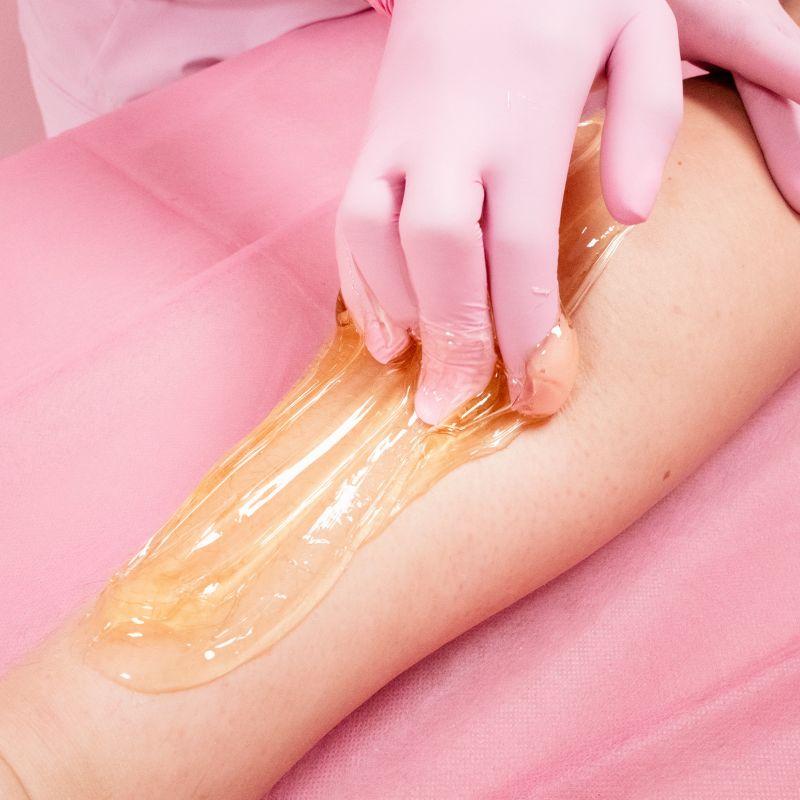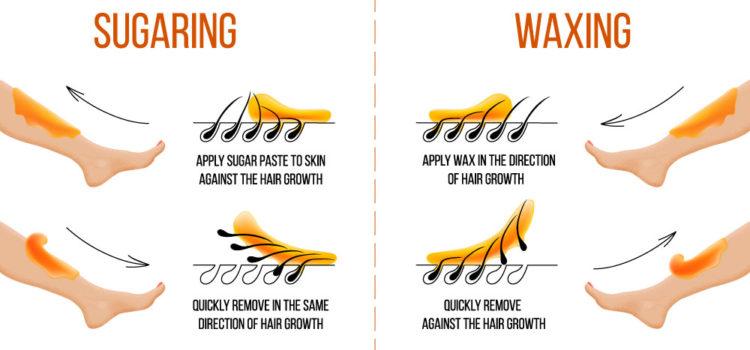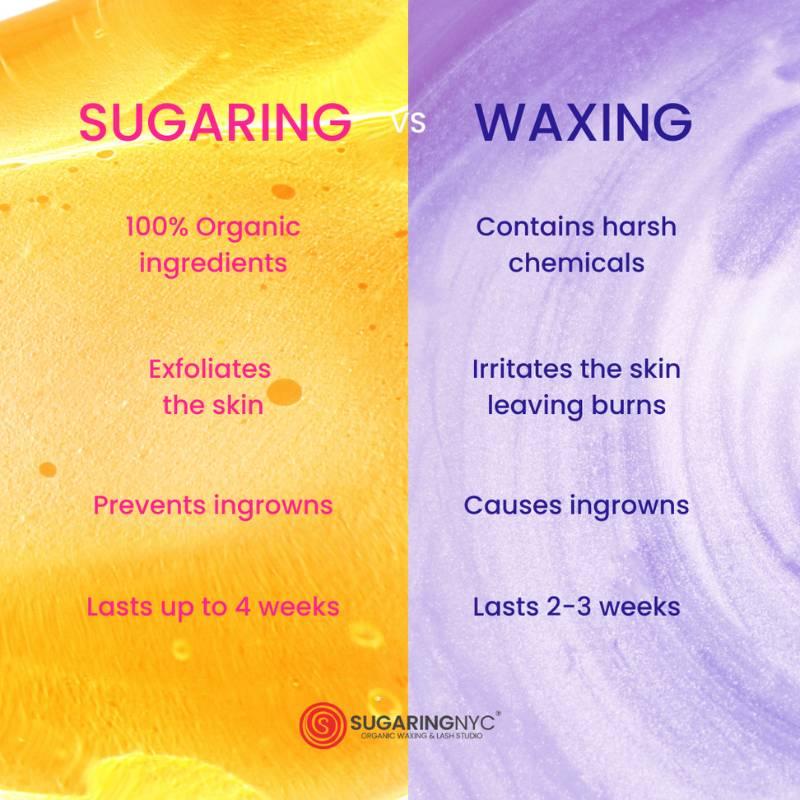Picture this: a sun-drenched beach, shimmering waves, and you—rocking silky smooth skin that’s free from pesky ingrown hairs and irritating stubble. Sounds like a dream, right? Enter sugaring, the centuries-old hair removal method that’s making a modern-day comeback with a sweet twist. Forget the razors, the burns, and the artificial chemicals. It’s time to indulge in a natural, skin-loving ritual that leaves you feeling fabulous from head to toe. Welcome to “Sweeten Your Smooth: Why Sugaring is the Hair Removal MVP,” where we’ll dive into the luscious world of sugaring and uncover why this sweet sensation is winning hearts (and hairs) everywhere. Ready to join the sugaring revolution? Let’s get smooth!
The Natural Choice: Understanding the Basics of Sugaring
Sugaring, a hair removal technique dating back to ancient Egypt, offers a natural and gentle alternative to traditional waxing. The process involves a sticky paste made from just three ingredients: sugar, water, and lemon juice. This **all-natural formula** makes it a popular choice for those with sensitive skin or those looking for a chemical-free beauty regimen.
One of the biggest advantages of sugaring is that it adheres only to dead skin cells and hair, unlike waxing that can stick to live skin cells. This means less irritation and discomfort during the hair removal process. The paste is applied at room temperature or slightly warmed, thereby reducing the risk of burns associated with hot wax treatments.
Here are some standout benefits of sugaring:
- Made from 100% natural ingredients
- Less painful than traditional waxing
- Lower risk of ingrown hairs
- Exfoliates while removing hair
- Easy cleanup with just water
If you’re curious about how sugaring stacks up against other hair removal methods, consider the following comparison:
| Method | Main Ingredients | Pain Level | Skin Reaction |
|---|---|---|---|
| Sugaring | Sugar, Water, Lemon | Low to Medium | Minimal Irritation |
| Waxing | Wax, Rosins | Medium to High | Potential Redness |
| Shaving | Razor, Shaving Cream | Low | Possible Razor Burn |

Gentle and Effective: How Sugaring Outshines Traditional Methods
Imagine a world where hair removal is not synonymous with pain and irritation. Enter sugaring, the sweet and powerful alternative to traditional waxing and shaving techniques. Unlike other methods, sugaring uses a natural paste made from sugar, water, and lemon juice, which is both gentle on the skin and effective in capturing even the tiniest hairs. This means fewer ingrown hairs and less redness after treatment, making it a favorite for sensitive skin.
Traditional hair removal methods often involve harsh chemicals or aggressive pulling that can leave the skin feeling raw and inflamed. In contrast, sugaring pulls the hair gently in the natural direction of growth, reducing the likelihood of breakage and ensuring a smoother, longer-lasting result. Plus, since the ingredients are all-natural, there’s no need to worry about allergic reactions or skin irritations.
- Less painful than waxing
- Reduces risk of ingrown hairs
- Natural ingredients prevent skin irritation
- Eco-friendly and biodegradable
For those still on the fence, consider this: sugaring is not just superior to other methods in terms of effectiveness, it’s also a more sustainable choice. The biodegradable nature of the sugar paste means it’s better for the environment. And while waxing can leave sticky residues that require chemical removers, sugaring paste can be easily cleaned with just water.
Here’s a quick comparison:
| Method | Pain Level | Skin Irritation | Environmental Impact |
|---|---|---|---|
| Sugaring | Low | Minimal | Eco-friendly |
| Waxing | High | High | Moderate |
| Shaving | Low | Moderate | High (plastic waste) |
The benefits are clear: whether you’re looking for a gentler alternative or aiming to make more environmentally conscious choices, sugaring stands out as a versatile MVP in the realm of hair removal. So why not sweeten your smooth and give sugaring a try?

Pamper Your Skin: The Benefits of Sugaring for Sensitive Areas
If you’ve ever considered a more gentle alternative to traditional waxing, sugaring might just be your new best friend. This ancient Middle Eastern practice uses a natural paste mixture of sugar, lemon juice, and water, making it perfect for those with sensitive skin. Why? It’s all about the ingredients – they’re fewer and simpler, free from the harsh chemicals often found in many waxes. The result is a **smooth, irritation-free** finish that your skin will love.
One of the prime benefits of this hair removal method is its **minimal irritation**. Unlike waxing, where hair is removed against the direction of its growth, sugaring happens in the direction of hair growth. This reduces the likelihood of breakage and ingrown hairs – a clear win for any bikini line, underarm, or facial area. The skin is left feeling soft without the dreaded post-wax redness or bumps. Additionally, sugaring paste is used at a lukewarm temperature, which means no risk of burns, making it incredibly kind to your delicate skin.
Another major plus is how **exfoliating** sugaring can be. The application not only removes hair but also gently sloughs off dead skin cells. This means you’re left with skin that isn’t just hair-free, but also looks and feels rejuvenated. The simple, natural ingredients can help improve your skin’s texture and appearance, promoting a radiant, healthy glow that other hair removal methods often miss out on.
| Benefits | Description |
|---|---|
| Minimal Irritation | Removes hair in its natural direction, reducing ingrown hairs and skin damage. |
| Exfoliation | Gently takes away dead skin cells, leaving a smooth finish. |
| No Burns | Lukewarm application avoids risks associated with hot wax. |
| Natural Ingredients | Free from chemicals, making it ideal for sensitive areas. |
- Eco-Friendly: With just three natural ingredients, sugaring is also much more environmentally friendly compared to synthetic waxes and their packaging.
- Less Pain: Many find sugaring to be less painful than waxing because it doesn’t stick to live skin cells, only to hair and dead skin.
- Long-lasting Results: Regular sugaring can lead to hair growing back finer and sparser over time.

DIY Delight: Making Your Own Sugaring Paste at Home
Ready to make your own sugaring paste at home? It’s simpler than you might think! All you need are a few basic ingredients typically found in your kitchen. The best part? You can customize your paste to fit your skin’s unique needs. Here’s what you’ll need:
- Sugar (1 cup)
- Lemon juice (1/4 cup)
- Water (1/4 cup)
Once you’ve gathered your ingredients, it’s time to create magic. Mix them in a saucepan over medium heat, stirring continuously. The goal is to dissolve the sugar thoroughly, allowing the mixture to thicken into a smooth, honey-colored paste. This process usually takes about 10-15 minutes. As it cooks, you might see some bubbling, but don’t worry—this is perfectly normal. Just keep an eye on it to avoid burning.
Here’s a friendly tip: knowing the right consistency is key. Your paste should be pliable but not overly sticky. To check, drop a tiny amount into a bowl of cold water. If it forms a soft ball, you’re golden! If it spreads out or stays runny, cook it a bit longer. Trust your instincts—it may take a couple of tries, but you’ll get there. Once ready, let the paste cool slightly before using it. Store any leftovers in a sealed container for future use.
| Ingredient | Amount |
|---|---|
| Sugar | 1 cup |
| Lemon Juice | 1/4 cup |
| Water | 1/4 cup |
When you’re ready to use your homemade paste, make sure your skin is clean and dry. Apply a thin layer of the paste against the direction of hair growth, then swiftly pull it off in the direction of hair growth. Voila! You’ll be left with smooth, hair-free skin. This ancient technique isn’t just gentle on your skin but also eco-friendly. Enjoy the sweet satisfaction of DIY beauty!

Smooth Operator: Expert Tips for Perfect Sugaring Results Every Time
Achieving flawless results with sugaring requires a combination of skill and technique. One of the key elements to ensure a smooth operation is to always work with the right consistency of the sugar paste. The ideal paste should be pliable but firm enough to hold its shape. **Temperature control** is crucial; too hot and it becomes too runny, too cold and it becomes too hard. Always check the temperature by testing a small amount on your inner wrist before application.
Preparation is another pillar to flawless sugaring. **Exfoliating** your skin a day or two before your sugaring session helps remove dead skin cells, allowing the sugar paste to adhere more effectively to the hair rather than the skin. However, avoid heavy oils or lotions right before your appointment, as these can create a barrier between the paste and your hair.
**Application technique** matters just as much as the preparation. Apply the paste against the hair growth and remove it in the direction of growth to minimize breakage and discomfort. Think of sugaring as a sweet dance: suspense and tension should be balanced. Gentle but firm action ensures the entire hair is removed from the root, leading to longer-lasting smoothness.
soothing post-sugaring care will seal the deal. **Aftercare** is paramount for maintaining the appearance of soft, smooth skin. Apply a cool compress to calm any irritation and moisturize with a light, unscented lotion. Here are some aftercare tips:
- Avoid direct sunlight and tanning beds for at least 48 hours.
- Stay clear of hot baths and saunas for the first 24 hours to prevent irritation.
- Wear loose clothing to let your skin breathe and recover.
Q&A
Q: What exactly is sugaring, and how does it work?
A: Sugaring is an ancient hair removal method dating back to early civilizations, including Egypt and Mesopotamia. It involves applying a mixture of sugar, lemon juice, and water to the skin, which adheres to the hair (not the skin) and gently pulls it out from the root. Think of it as a sweet and sticky superhero cape that leaves your skin smooth and your hair less traumatized.
Q: Why do you call sugaring the “Hair Removal MVP”?
A: Imagine the hair removal Olympics, where methods like shaving, waxing, and depilatory creams compete for the gold medal. Sugaring would be the undisputed champion. It stands out because it’s less painful, made from natural ingredients, and leaves skin soft and exfoliated. Plus, it can target even the shortest hairs, ensuring flawless, long-lasting smoothness.
Q: Is sugaring kinder to the skin compared to waxing?
A: Absolutely! Sugaring sticks to hair and dead skin cells rather than live skin cells, making it much gentler. The simple, natural ingredients also mean fewer chances of irritation or allergic reactions. While waxing might leave you red and sensitive, sugaring is like a comforting embrace for your skin.
Q: What are some benefits of using sugar paste for hair removal?
A: Ah, where to start? Here are a few fantastic benefits:
- Exfoliation Bonus: Sugaring not only removes hair but also exfoliates dead skin cells, giving your skin a fresh, radiant look.
- Long-lasting Results: Because it pulls hair from the root, you can enjoy smooth skin for up to six weeks.
- Natural Ingredients: It’s edible and usually only contains sugar, lemon, and water—no harsh chemicals.
- Less Painful: People often find sugaring less painful than other methods because it doesn’t stick to live skin cells.
Q: Can anyone use sugaring, or is it only for certain skin types?
A: Sugaring is inclusive—think of it as the universal donor of hair removal. It’s suitable for all skin types, including sensitive skin. Whether you’re dealing with coarse or fine hair, light or dark skin, sugaring embraces everyone with open, sticky arms.
Q: What’s the downtime after sugaring? Are there any post-care tips?
A: One of the great things about sugaring is the minimal downtime. You’ll walk out of your session ready to flaunt your smooth skin. For post-care: avoid hot showers, heavy sweating, and direct sun exposure for at least 24 hours. Moisturize regularly and exfoliate gently to keep ingrown hairs at bay.
Q: Does sugaring help with hair regrowth over time?
A: Yes, indeed! Consistent sugaring sessions can lead to hair growing back finer and sparser. Over time, you might notice less hair in the sugared areas, making the whole process even more rewarding. Sweet, isn’t it?
Q: Any DIY tips for those wanting to try sugaring at home?
A: DIY sugaring is totally doable and can be a fun kitchen experiment. Just mix 2 cups of sugar, ¼ cup of lemon juice, and ¼ cup of water. Heat it gently until it turns golden brown and thickens. Let it cool slightly before application. But remember, perfecting the technique takes practice, so don’t get discouraged if your first batch isn’t salon-perfect!
Q: In one sentence, why should someone switch to sugaring?
A: Sugaring offers a natural, gentle, and long-lasting hair removal method that leaves your skin smooth, exfoliated, and deserving of all the sweetness life has to offer.
Final Thoughts
As we wrap up this deliciously sweet journey through the art of sugaring, it’s clear why this age-old technique has earned the title of hair removal MVP. From its gentle caress on the skin to its eco-friendly nature, sugaring is more than just a method—it’s a pampering ritual that leaves you feeling silky smooth and utterly rejuvenated.
So, the next time you’re gearing up to wave goodbye to those unwanted hairs, remember the golden touch of sugar, lemon, and water. Step into the light with confidence and revel in the smoothness that only sugaring can deliver. Here’s to sweet victories, one silky swipe at a time!✨
What’s your sugaring experience? Join the conversation and share your stories—because every body deserves a sweet treat!






